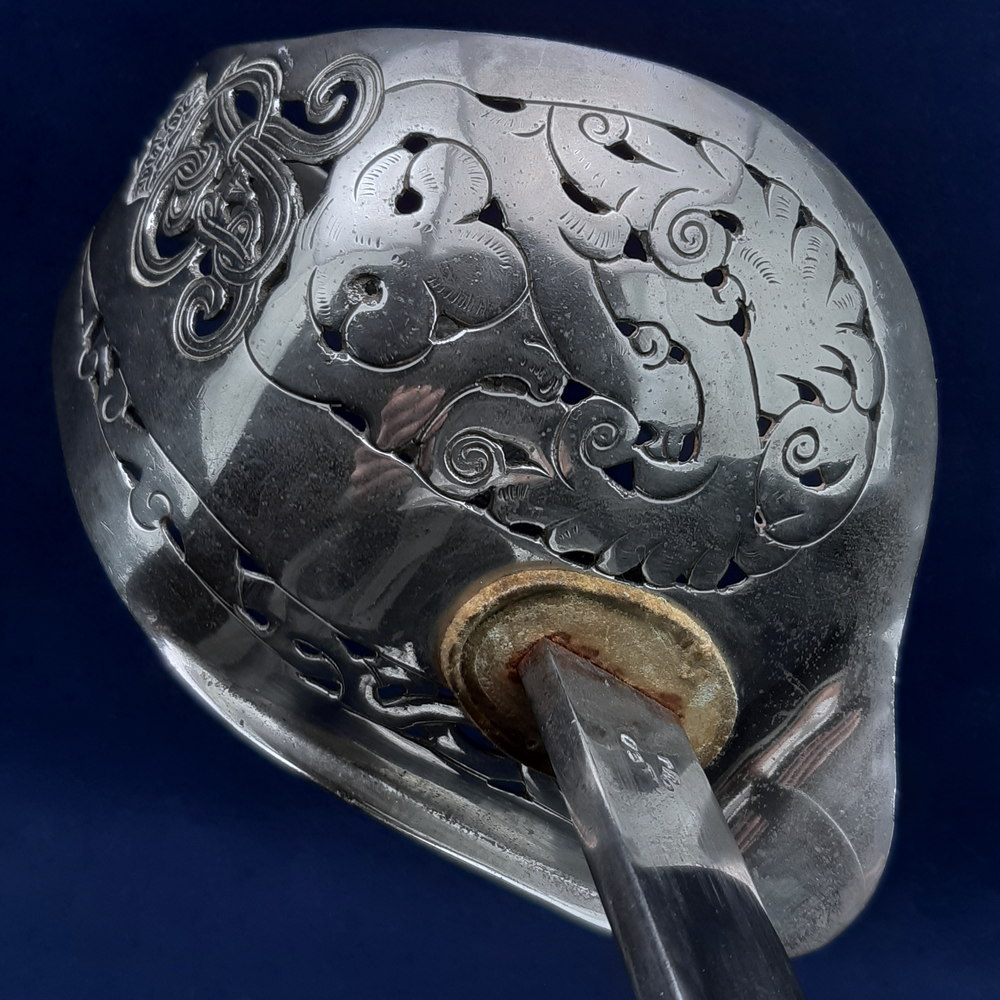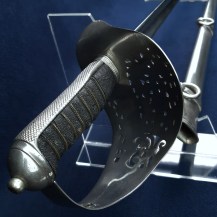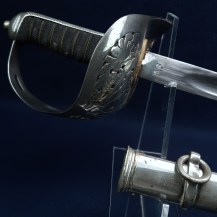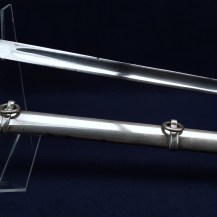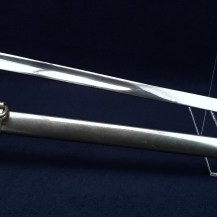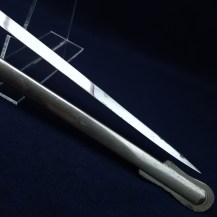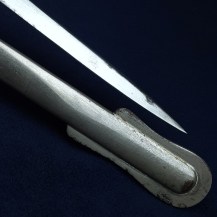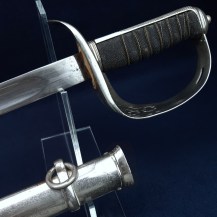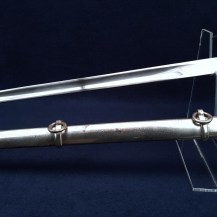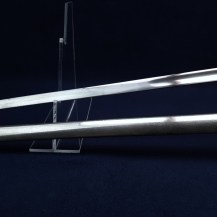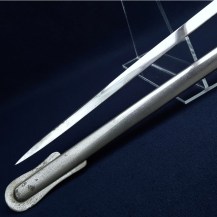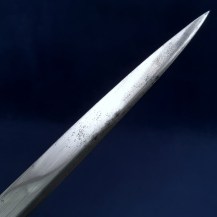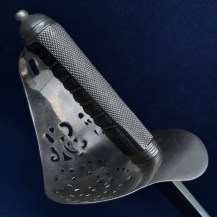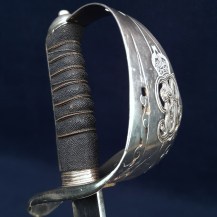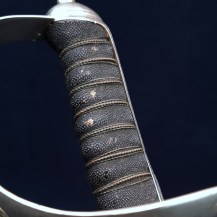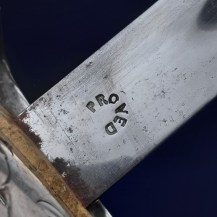British George V 1897 Pattern Infantry Officer’s Sword, Probably WW1
Straight single-fullered spear-pointed blade. Steel hilt with pierced and imprinted decoration including the crown and cypher of King George V (reigned 1910-1936). Steel ferrule, fully chequered steel backstrap, integral oval pommel with tang button. Wire-bound black shagreen grip, brown leather washer. Steel nickel-plated parade scabbard, with two hanging rings. Blade 32 5/8 inches in length past the washer, 1 inch wide at the shoulder, the sword 38½ inches overall.
The blade is stamped on one side at the ricasso with a proof mark that is simply ‘PROVED’ with the letters arranged in a circle. This is a more economical form of the traditional proof, which would usually take the form of an inset brass proof slug surrounded by etching. There is no maker’s mark or other markings on the blade.
I have seen this simplified proof mark before on swords produced during WW1, by the manufacturers Fenton Brothers and Hawksworth, both in Sheffield. These firms did not typically manufacture swords and only began to do so due to the war. I have also seen examples stamped with this proof mark but no maker’s mark, just the text ‘MADE IN SHEFFIELD’.
Lacking all of the equipment and skilled labour that would be available at a firm of sword cutlers, these wartime manufacturers at times had to improvise, such as making hilts out of materials other than steel (to avoid the need to bend a steel ‘flat’ into shape which required specialised tooling) or swapping the shagreen grip for leather.
Skipping the traditional but non-essential slugs for a simple stamp on the steel may have been another such measure and does not seem to have been done by any established firms. Wartime swords did typically have decorative etching, so this example is a little unusual in having a completely plain blade. There might have once been shallow etching that has been completely polished off subsequently.
The blade is bright with a mirror polish, with some light frosting in places, a few small spots of patination, small patches of heavy patination at the very shoulder abutting the washer, and polishing marks. The blade’s edge is unsharpened and undamaged. The shagreen of the grip has a few small spots of wear and one lost scale which show up brown, its wire binding is all present with some movement to all the loops. The hilt, ferrule, backstrap and pommel have all been nickel-plated and this plating is in very good condition with little wear even on high-wear areas like the edges and inside of the hilt. No movement to the hilt, the sword is solid in the hand. The scabbard’s plating has a few spots of wear revealing patinated steel, the scabbard as a whole is straight and free of dents allowing smooth sheathing and drawing.

